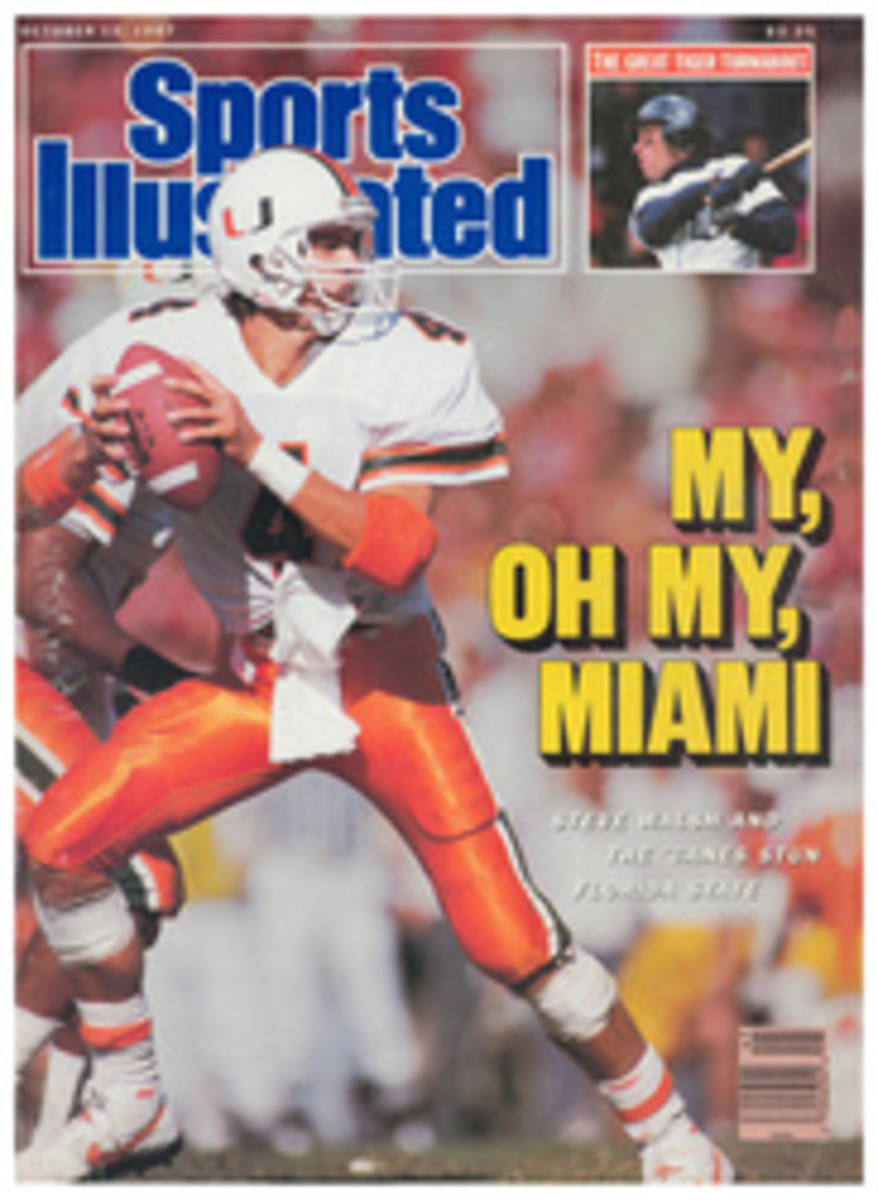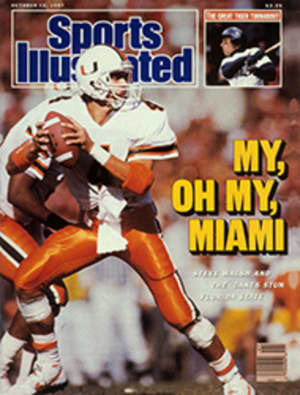
THE NEWEST LOOK IS OLD
When the Buffalo Bisons of the American Association play their first game at spanking new Pilot Field next April, the stadium's architects are hoping for an unusual reaction. "After people walk into it," predicts architect Rick deFlon, "they're going to think, 'What a wonderful old ballpark.' "
Chicago White Sox fans may be similarly surprised by the edifice planned to replace Comiskey Park on a site across the street from the 77-year-old stadium. Instead of a giant concrete doughnut, the White Sox are contemplating an intimate, 42,000-seat ballpark that would echo Comiskey's best design elements, right down to the arches, bricks and natural grass. There even is talk of duplicating the fireworks-spewing scoreboard installed at Comiskey in 1960 by the late Bill Veeck.
Everything old is new again. Just when you thought a modern ballpark had to have a fabric dome or to mimic the spaceship from Close Encounters, city councils are asking stadium architects to search the past for design ideas.
"It's been a trend the last couple of years," says deFlon, a vice-president at the HOK Sports Facilities Group, the Kansas City architectural firm that designed the Buffalo facility, as well as Joe Robbie Stadium in Miami and Bradley Center Arena in Milwaukee. "We've had interest in old-fashioned parks expressed by the White Sox [who have not yet settled on an architect], the Orioles, almost everyone in baseball."
The Buffalo project practically demanded period architecture because the site is on the edge of a downtown historic preservation district. To honor the surrounding limestone landmarks, Joe Spear, a vice-president at HOK, designed the 19,500-seat Pilot Field with a green metal roof mounted on steel trusses, pennant-topped cupolas, a backlit colonnade, windowpane enclosures above the gates and wall sconces over exterior sidewalks.
"We originally wanted the old-time light standards [weblike steel trusses]," says Charles Rosenow, stadium project coordinator. "Then we found out why nobody uses them anymore. The new ones [tapered monopoles] are much less expensive."
Pilot Field's exterior will feature marble tiles set in precast concrete panels colored like the surrounding buildings. To further emulate the preexisting architectural mood, the panels will be decorated with grooves called rustication joints. Real limestone. Spear explains, would have been a budget-buster. Besides, stonemasons are in short supply. "I don't think we'd be able to find anybody today who could carve a stone buffalo head."
In large part the period stadium trend is a calculated effort to evoke the ghosts of Cobb, Grove and Gehrig as part of contemporary ballpark ambience. "There is a return to the idea that baseball is a family outing, a bit of tradition," says Gordon Wood, sports facilities technical director at Howard Needles Tarn men & Bergendoff, a Kansas City architectural engineering firm that has worked on Pontiac Stadium, Giants Stadium and the Hoosier Dome. Wood points out, however, that this nostalgia trend seems to be part of the postmodernist direction that architecture in general has taken. The new-old stadiums may owe as much to Philip Johnson's updated-classic 1979 design for the AT & T tower in Manhattan, which has a Chippendale-style pediment, as to the public's yearning for oddball structures like the Polo Grounds.
What makes a stadium look traditional? Architects cite the following:
•Exposed skeletons: steel columns and trusses joined by visible bolts, rivets or welds.
•Asymmetrical shapes: The dimensions of old ballparks were often dictated by existing urban street plans.
•Switchback ramps or stairs, not spiral ramps. The planned White Sox park, for example, will have switchback ramps. "They're not quite as foreign to that period feeling," says Spear. "It's kind of hard to disguise a spiral ramp."
•Outfield upper-deck seating, which increases the overall sense of intimacy.
A period ballpark also demands an old-time paint scheme, which usually means blue and green. Modern stadium colors such as red, yellow and orange are inappropriate. Other authentic touches can include masonry arches, incandescent lighting and slanted roofs.
The functional demands of a modern ballpark are another story. "'Sometimes what people like in the old ballparks doesn't lend itself to fan comfort and convenience," says White Sox controller Terry Savarise. "It's exciting to see a home run hit into the upper deck, but except for Opening Day, people don't want to sit in those seats. They all want to sit in box seats behind first or third base or behind the dugouts." And it goes without saying that the modern baseball fan who grew up with replays and slomos isn't about to settle for a view spoiled by a steel column.
Ditto for eccentric dimensions, Fenway's charm notwithstanding. "Fenway's great because of its Green Monster, but if you start talking to people, they really don't want a Green Monster," says deFlon. "Look at the short walls in the Minneapolis Metrodome. They aren't that different from Boston's, but fans complain that they cheapen the game."
How far the period ballpark trend will go is hard to predict. "Not everyone is looking that way," says Wood. "The people who want a baseball franchise in New Jersey have expressed a preference for it, but Phoenix has shown no interest in an old-fashioned stadium."
Do the architects working on these projects have their favorite period parks? Doesn't everyone? DeFlon admits to a fondness for Chicago's other ballpark, Wrigley Field, while Spear votes for two structures that have already fallen to the wrecking ball—Philadelphia's Connie Mack Stadium and Brooklyn's Ebbets Field.
Refusing to date himself with a direct answer, HOK senior vice-president Ron Labinski tells of a recent conversation he had with a young reporter. "Ebbets Field?" the reporter asked. "Where's that?"
Labinski shakes his head sadly. "Makes you feel old."
At least when HOK makes you feel old, the company has done it on purpose. And you feel better, not worse.
PHOTO
HOK SPORTS FACILITIES GROUP
A model of the park that opens next spring shows its arches and cupolas.

